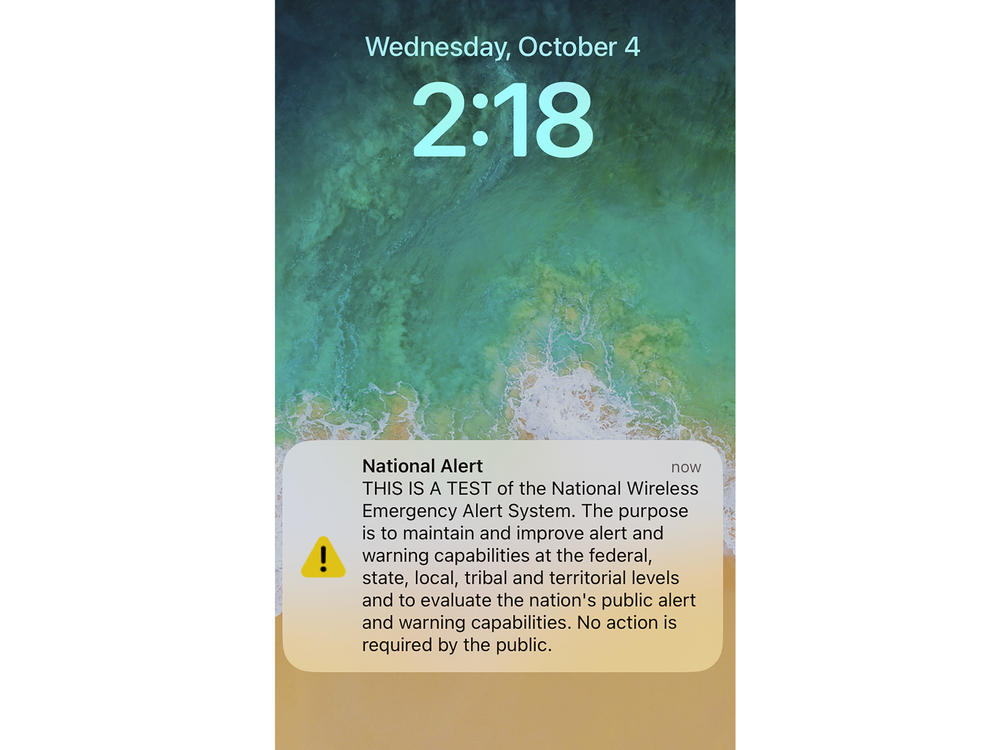Section Branding
Header Content
That nationwide emergency alert test we told you about? It came a bit early for some
Primary Content
Updated October 4, 2023 at 7:36 PM ET
If you heard your phone blurt out alarming tones this afternoon, you probably know by now that it was just a test. If you don't, it's safe to come out of your bunker.
The federal government conducted a nationwide test of its Wireless Emergency Alerts (WEA) system on Wednesday afternoon, sending messages to all cellphones, televisions and radios.
The Federal Emergency Management Agency said the test went well, reaching all cell carriers that participate in WEA and the signal was processed and sent to broadcasters.
FEMA and the Federal Communications Commission are running the test to prepare for actual emergencies. The aim is to ensure the emergency messaging system is running smoothly in the event Americans are threatened by natural disasters, terrorism or other dangers to public safety.
You may be familiar with the jolting sounds accompanying National Weather Service alerts and AMBER (America's Missing: Broadcast Emergency Response) alerts. Wednesday's cellphone alerts were sent via the same wireless system.
When was the test?
The test was scheduled to begin at about 2:20 p.m. ET on Wednesday, although many people received it a few minutes early.
The testing window ran for 30 minutes, and you should have received only one message. If an actual emergency had happened on Wednesday, the test would have been postponed with a backup scheduled for next week.
FEMA is required by law to conduct national tests of the Integrated Public Alert & Warning System (IPAWS) at least once every three years. The last national test was in 2021.
What did the test message look like?
On cellphones, the alert read:
"THIS IS A TEST of the National Wireless Emergency Alert System. No action is needed." Phones set to Spanish displayed: "ESTA ES UNA PRUEBA del Sistema Nacional de Alerta de Emergencia. No se necesita acción."
TV and radio announced:
"This is a nationwide test of the Emergency Alert System, issued by the Federal Emergency Management Agency, covering the United States from 14:20 to 14:50 hours ET. This is only a test. No action is required by the public."
How did it go over?
Most people posting to social media seemed underwhelmed by the short, blaring alert after lots of online hype. Some were jarred by it coming two minutes before the scheduled time of 2:20 p.m. But for many, the prevailing sentiment was "nothing really happened."
What happens next?
FEMA will now conduct a survey on the WEA portion of the test to gauge its geographic reach. The results will help FEMA, the Federal Communications Commission and public safety officials enhance and expand the system.
Final determination of how far the test reached will be done by FEMA and the FCC and results could take about four months.
Copyright 2023 NPR. To see more, visit https://www.npr.org.

